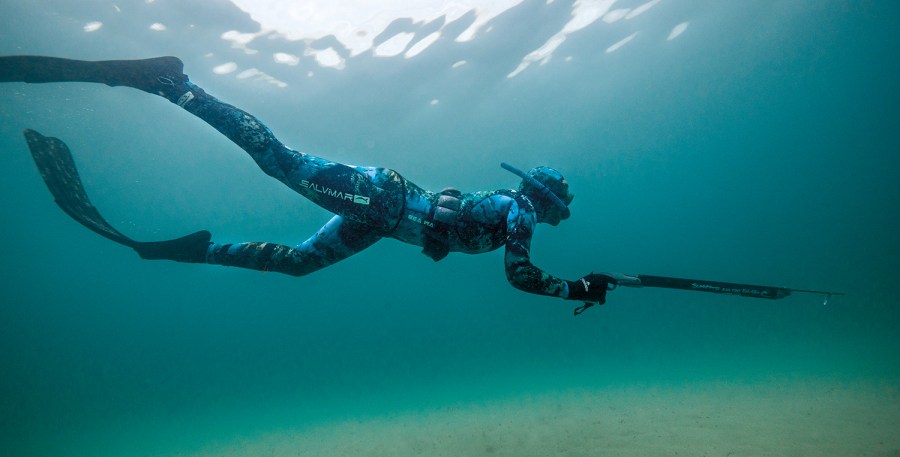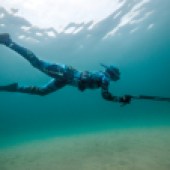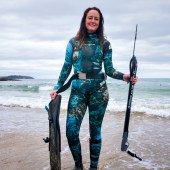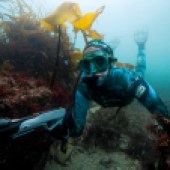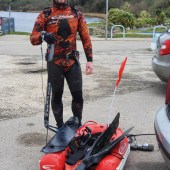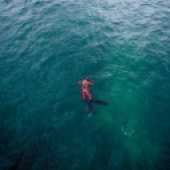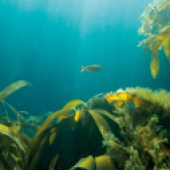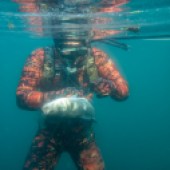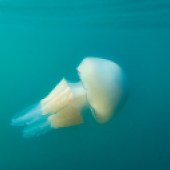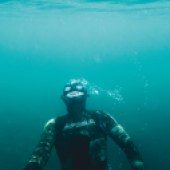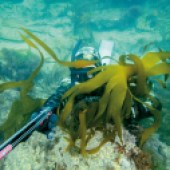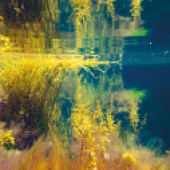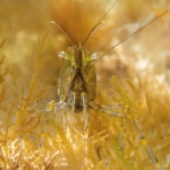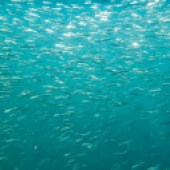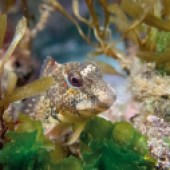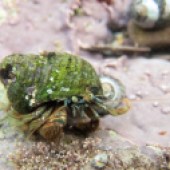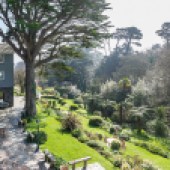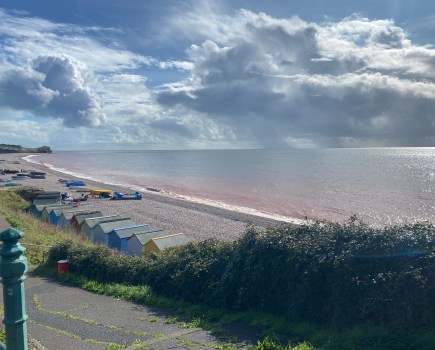Captivated by the idea of catching your own supper? Spend a day in Falmouth on the Cornish coast, learning how to become a safe and effective ‘speara’
Spearfishing UK is a tribe of passionate ‘spearos’ based in Cornwall who have created an international business around their knowledge of this fast-growing sport. As well as being a one-stop-shop for underwater equipment – from camouflage wetsuits to speedy foot fins – the founder, Tony Eynon, is dedicated to teaching newcomers how to start out in this sport safely and effectively. For novices, the emphasis is on acclimatisation to the process and learning to use the equipment rather than bagging lots of fish – although this can easily happen on your first experience too. Around the Cornish coast this might include sea bass, pollock, cod and shellfish such as lobster and scallops, caught individually, in the most sustainable way possible, without bycatch.
My teacher on the one-day Spearfishing UK beginner’s course is Laith Dajani, who started working with Tony while he was at Falmouth University, studying marine and natural history photography. He was drawn to spearfishing because it connects to the hunter-gatherer instinct in all of us, allowing us to be selective and sustainable in how we eat seafood. One to one, I’m about to discover this new way of hunting underwater.
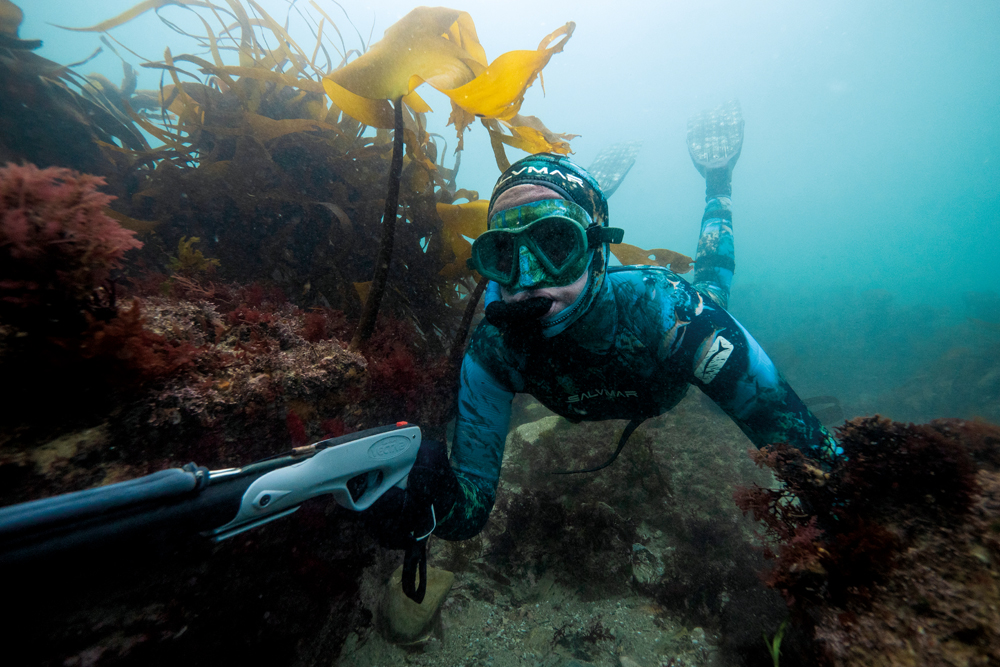
10AM THE SCHOOL OF FISH
I meet Laith at Swanpool Beach, a lively and sheltered cove on the outskirts of Falmouth. Before we get to submerge ourselves in the ocean – inspiring equal amounts of excitement and trepidation – Laith takes me through all the essentials of spearfishing safety, not something to be glanced over. We cover the importance of breathing techniques, which are akin to that of freediving. Laith calmly explains how staying relaxed is one of the most effective ways to extend your breath hold underwater. Surrounded by camouflage neoprene, orange floats, ropes and sharp hardware, I get an insight into a whole new world of marine hunting as each piece of equipment is described and demonstrated for me before it’s time to embrace my inner Bond Girl!
12PM KITTING UP
As I prepare to get into my rather fetching turquoise camo, two-piece wetsuit, Laith surprises me with a warmed bottle of what is known as ‘slippy’ – a biodegradable lubricant for helping ease you into your necessarily snug suit. ‘We spend a long time underwater and unlike normal wetsuits that allow a lot of water in between your skin and the neoprene, these suits have to contend with buoyancy and cold temperatures so they are purposefully tight to allow only the minimal amount of water in, meaning your body doesn’t lose essential warmth by heating excess water,’ he explains. So I lube my suit and in I squeeze, admittedly without much grace and with some assistance from Laith, who assures me that it gets easier with practice.
He then adds a leaded weight belt, which will help me reach depths without struggling too hard and wasting my oxygen stores, fits me with booties, flippers, gloves, a knife strapped to my calf, and a snorkel and mask. Nearly all of which is camouflage print, not as a fashion statement but as an essential part of what is fundamentally stalking and hunting underwater game. We head for the sea, flippers on as we get deep enough to float and off we ‘fin’, me with gun in hand and Laith towing our bright orange float, with an anchor, for safely spending time around any mark we stop to dive at.
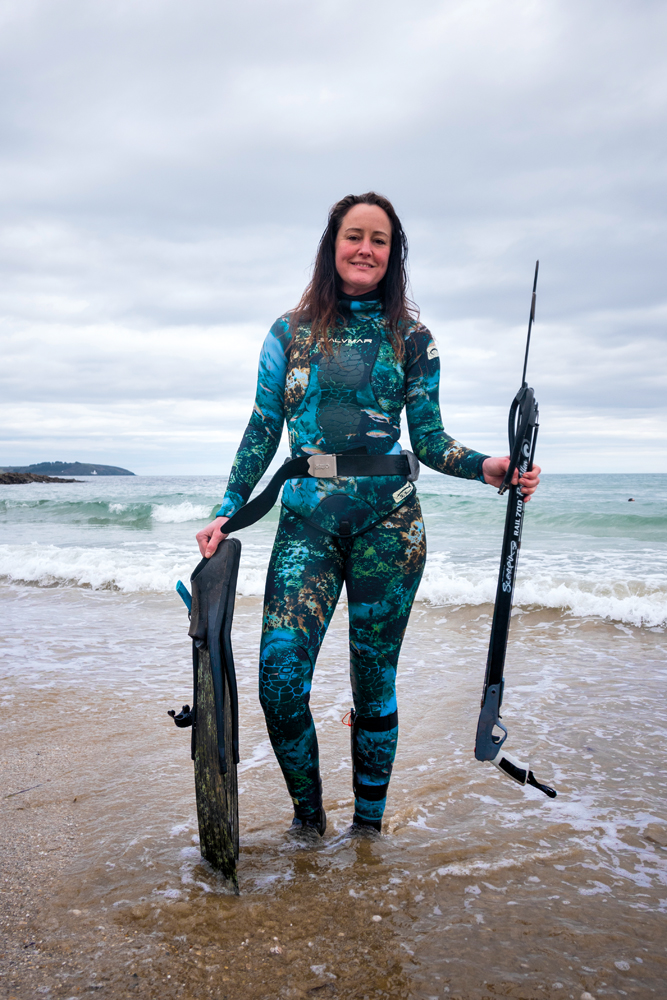
If you’re searching for a staycation hotspot for your Cornish break, try these top Cornwall hotels.
1PM A LITTLE TARGET PRACTICE
You don’t have to go far to start fishing, contrary to what many believe. The majority of spearfishing takes place in the rocky shallows and sandy beds of coastal coves and beaches with depths averaging around four to 12 metres. I’m excited to get below the surface and Laith explains the techniques for getting the smoothest and deepest dive using as little energy as possible. I float for a minute looking down at the sandy seabed, making sure that I’m feeling relaxed and calm, then I make like an otter and disappear. I reach the bottom and grab some evidence of my successful first dive – a handful of sand to show Laith as I surface again.
I’m told that my dive technique is good but Laith points out, ‘Try to keep your legs straight behind you – it helps with a more direct descent and it reduces the size of your profile in the water.’ After a few more dives I’m ready to start using the hardware. Laith drops a bright pink foam fish to the seabed with a weight and rope so it floats a couple of feet above the sand and shows me how to load my gun while floating.
I dive again, gun in hand and line myself up with the sitting target, there’s a strange sense of distortion in distance – even a foam fish can move quite suddenly in this fluid environment, which means that a whole side of fish to aim at can quickly become an inch when it moves 45 degrees. Thankfully I hit it.
2PM STALKING OUR PREY
Schools of fish often hide out amongst the rocks and sea kelp forests that edge cliffs and coves. Like flocks of floating birds, the fish dart about when disturbed, seeking shelter amongst the fronds of these swaying seaweeds. We see a few wrasse gliding gently below us. ‘You can use the seaweed either to slowly stalk the fish while camouflaged or to quietly wait amongst it for fish to come by,’ Laith explains. I try to imagine having enough time to do this after diving down and getting into position.
Taking a breath, I go down to explore, when I reach the seascape of colourful seaweed, craggy holes and kelp roots, I’m mesmerised. The weighted belt comes into its own and I guide myself through small gullies by pulling on rocks, spotting crabs tucked into sandy holes and pushing aside kelp like long grasses.
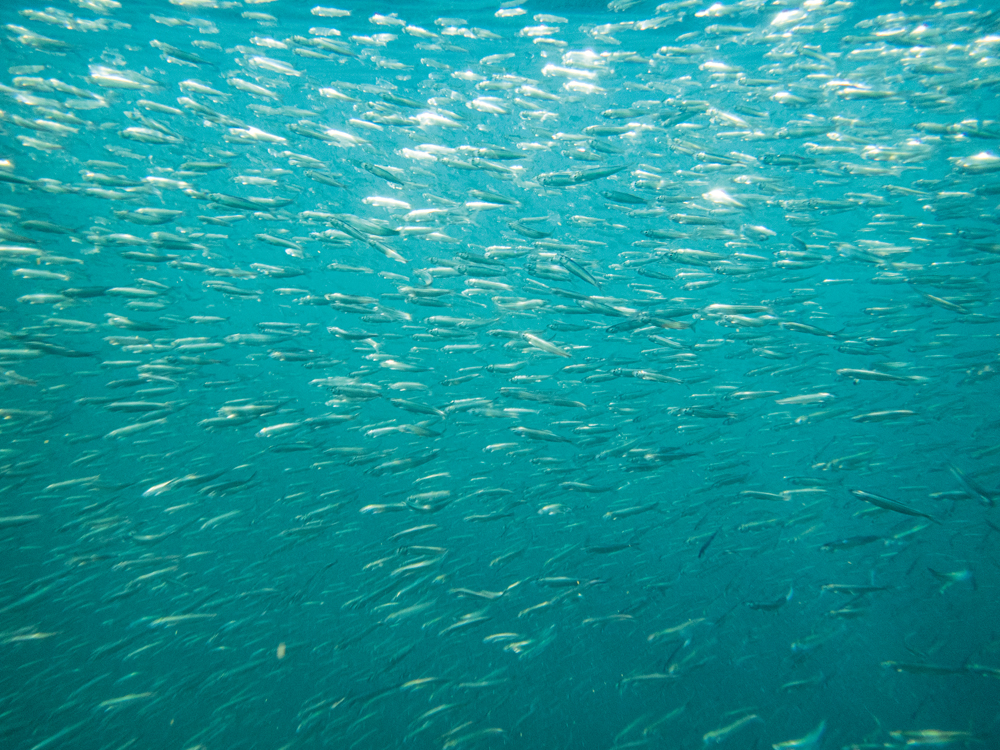
3PM TO THE HUNTER, THE SPOILS
My confidence in this new watery playground has settled and we can start thinking about catching some dinner. Laith has brought a squeezy bottle of heavily salted water to lure the razor clams out of the sandy ocean floor. ‘You have to keep an eye out for what looks like a keyhole-shaped hole in the sand and squeeze the salty water in to the hole, the clams push back as the salinity is too high for them and then rise up a few centimetres,’ he explains to me.
‘You have to grab them swiftly and firmly, and pull them out steadily.’
I take the bottle and dive down to have a go. It’s not long before I spot the kind of hole he’s mentioned and see a hint of white inside. However, at this point I’m almost out of breath so I memorise the spot and head back up for a fresh store of oxygen. Dropping back down again, I make straight for the same area, locate the hole and squirt! Sure enough, like magic, up pops a couple of inches of razor clam shell. I grab it quick and then pull. It puts up a surprising amount of resistance, but I am the victor. With some help from Laith, we collect eight in total and load up the float.
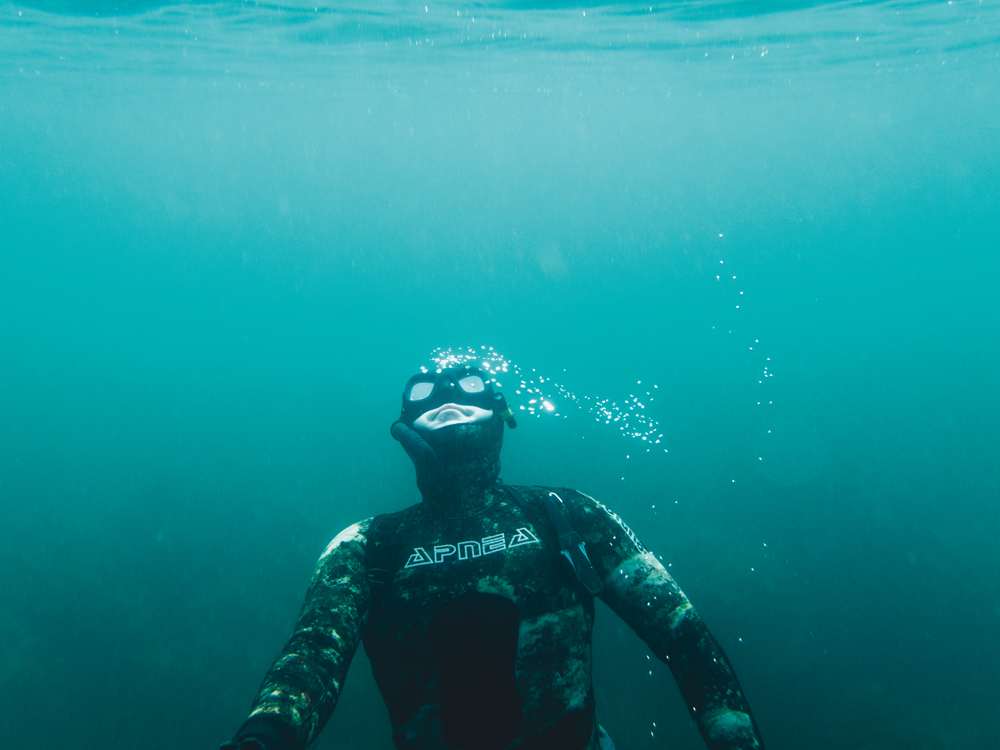
3.30PM SPOTTING QUARRY
As I happily bob about on the surface, waiting for Laith to bring up the anchor ready to head back to shore, a school of wrasse appear below me and before I’ve even thought about it, I’ve let off a shot. The spear glances off the tail of the fish that I’ve aimed for and it darts away unscathed. In spite of not bagging the wrasse, I feel a little sense of pride at seeing my instincts kick in while relaxing on the surface about to finish for the day. As we fin back to the shore, I’m already daydreaming about my return.
Ask the pro
Laith Dajani is manager at Spearfishing UK. ‘Spearfishing is a core part of my personality and helps me to feel like I’m finding my roots in nature again. But I’m also proud to be a spearfisher because it is the most sustainable and humane way to catch seafood, as we choose exactly what will be on the table that night. There’s no waste, no bycatch and we learn to shoot properly, minimising any suffering to the animal.
‘For me to pass my knowledge on to our students brings great joy. Firstly, I know that when they leave me at the end of the day, they’ll be fully knowledgeable about how to be safe in the water. Secondly, they’ll also know how to catch and prepare the freshest, most sustainable seafood there is.’
NEED TO KNOW
- Spearfishing UK usually runs courses out of the Falmouth area and in Dorset. Group sessions cost £150 per person, or £250 for a one-to-one course. It runs courses all year round but the best conditions are in summer leading into autumn. Book online at spearfishing.co.uk or call 01726 213290 to find out more. If you decide to take up the sport, the company offers spearfishing kits that contain everything you need, starting from £442.70, a saving of at least £50. For more details, visit https://www.spearfishing.co.uk/.
- Laith and his colleagues encourage as much practical experience on the course as possible and often you’ll find yourself bagging something for the dinner table, whether it be a fish that you manage to shoot with beginner’s luck (and Laith’s expert tuition, of course) or perhaps being successful in the battle of ‘bug’ hunting, managing to eke a crab or lobster out of its hidey hole. If you don’t get lucky, the instructors may catch something for you if there are fish about.
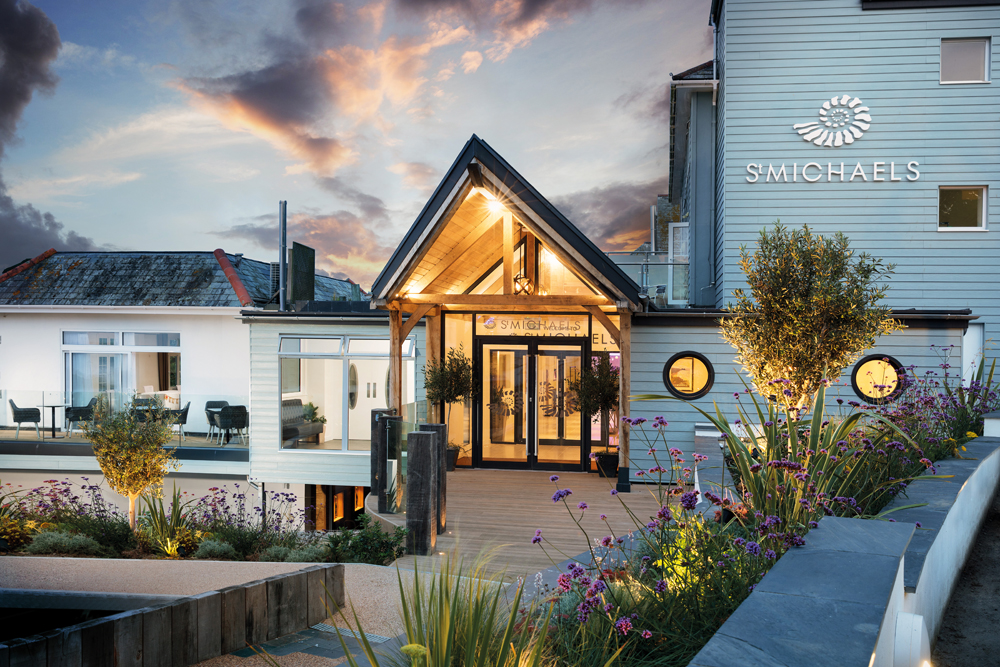
WHERE TO STAY IN FALMOUTH
- Meudon Hotel. A hidden-gem hotel near Falmouth, set in eight-and-a-half acres of sub-tropical gardens with a private beach, aptly named Bream Cove, where you can getin some pre- or post-course snorkelling for practice. From £219 per double room per night, on a B&B basis. To book, call 01326 250541 or visit meudon.co.uk.
- St Michael’s Resort. Tucked away just behind neighbouring Gyllyngvase Beach in Falmouth, this four star resort features contemporary coastal bedrooms, an award-winning spa, a state-of-the-art health club and ocean-view dining. From £139 per person, per night, on a B&B basis. To book, call 01326 312707 or visit stmichaelsresort.com.
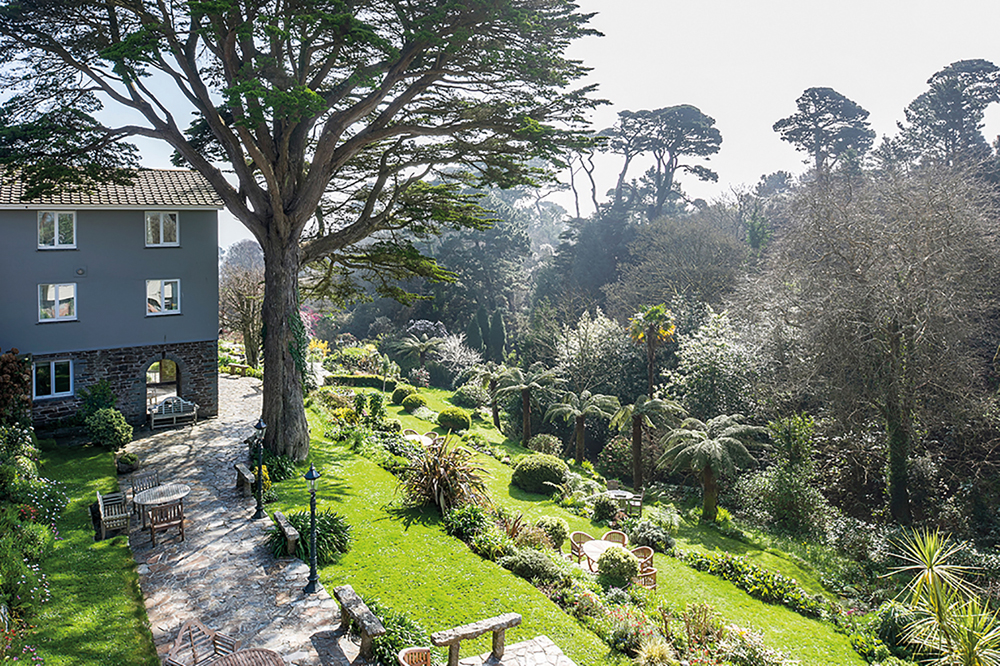
If you are thinking about catching your own supper why not start with a family fishing day, discover our top 10 sustainable seafood restaurants or pick up a copy of coast magazine for plenty more coastal living inspiration.

